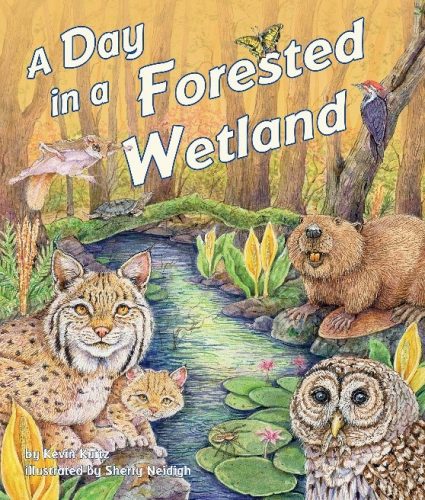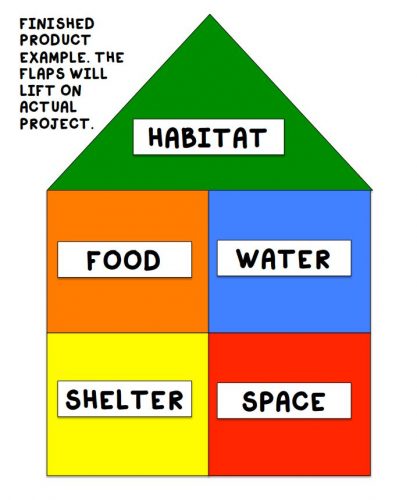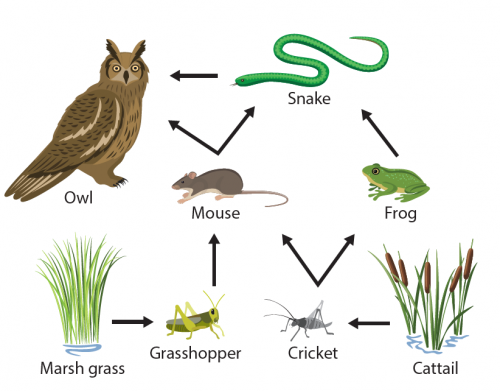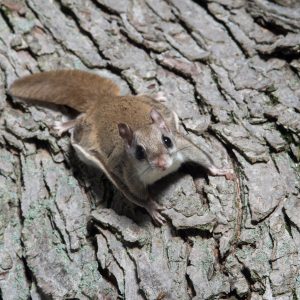A Day in a Forested Wetland
Grades K-3
Written by: Kevin Kurtz
Illustrated by: Sherry Neidigh
Published by: Arbordale, 2018
ISBN-13: 978-1628559125

Recommended Reading
A continuation of Kevin Kurtz’s award-winning “A Day In” series once again delights readers with a rhythmic, scientifically-sound look into a typical day for the animals that call the soggy forest home.
This nonfiction picture book takes readers on a field trip through the aquatic habitat of a forested wetland. Forested wetlands, also known as swamps, are found across North America. Readers of this book will see which animals are active in the day in a forested wetland and which ones come out at night.
As with other books by Arbordale, this story contains a Creative Minds section that includes factual information to provide points of discussion for parents and lesson options for teachers. Arbordale also offers a Spanish translation of this title to support ELL, ESL, and dual-language programs. The interactive ebook reads aloud in both English and Spanish. Chinese and French translations are available as well!
Lesson Ideas
Use the following ideas to practice and reinforce grade-level appropriate science concepts.

Play Habitat Spy
As many as a dozen different animal species can be found on a single 2-page spread. Challenge youth to identify not only the different species but also to identify what elements of the forested wetland habitat help them to achieve food, water, shelter and space.
This house template can help children understand that a habitat is like a home. Children can draw an animal that belongs in the environment and under the flaps of the house panels, they can draw or write about how each of the needs are met for that animal.
Click on the picture for a free template of the house and labels.
Diurnal vs. Nocturnal
As readers are introduced to the many species that can thrive in a forested wetland, consider which are diurnal (active in daytime) and which are nocturnal (active in nighttime). What clues can you collect about an animal’s appearance or other physical characteristics that support this kind of daytime or nighttime activity?

Inter-species Interactions
Forested wetland inhabitants do not live in isolation. The book offers instances of species interaction. Challenge readers to find examples of inter-species interactions. What happens? Were you surprised? Why or why not?
Animal Adaptations
Forested wetland inhabitants are suited to the place in which they live. This book creatively details specific species adaptations. Challenge readers to find one and explain how that specific adaption allows that species to thrive in a forested wetland area.
Explore New Vocabulary
Snags, camouflage, mandible, predators and prey are all scientific vocabulary terms introduced within this book’s rhyming text. Can readers use context clues to understand and define these new science words? How many more can you find and define?

Connections to PLT Activities
Consider coupling this picture book with the following PLT activities to deepen student understanding of biodiversity, particularly in habitats like forested wetlands.
PreK-8 Environmental Education Activity Guide:
#7 Habitat Pen Pals
#9 Planet Diversity
#22 Trees as Habitats
#26 Dynamic Duos
#45 Web of Life
#71 Watch on Wetlands
#88 Life on the Edge


